This post is also available in: Italian
Our journey to the mountain and botanical gardens of central-southern Italy, often comes across many examples of the dedicated work of mountain communities and passionate scholars. In Liguria, there’s the Botanical Garden of Pratorondanino, in the municipality of Campo Ligure (in the very heart of the Genoa Apennines): it was designed in 1979 by the Ligurian Amatori Orchidee Group, and features several different mountain environments, with over 400 plant species from all over the world. Inside the garden, there’s also an interesting path that winds across ponds, woods, meadows, and three rocky areas (including limestone and silica) where edelweiss, Primula marginate, Eryngium alpinum (rare and threatened of extinction), Viola bertolonii, and many other species thrive. The two aquatic environments, a pond and a small lake, host horsetails, ferns, water iris and several carnivorous species. The most valuable botanical collection of the Garden is that of the orchids, together with a remarkable range of saxifrage, houseleek, and botanical roses.
Emilia Romagna, on the other hand, is quite rich in mountain botanical gardens: in Cappelluzzo (near Piacenza), there’s Caplez Botanical Garden, built at some 2.395 ft above sea level; the lawyer Massimo Cantoni started to build it in 1990, supported by his great enthusiasm, passion and botanical knowledge – the garden was eventually opened to the public in spring 2010.
3.7 acre of limestone soil host about 1.800 plant species from all over the world. It’s worth mentioning the collections of shrubs and several perennial species belonging to the Campanula, Centaurea, Eryngium, Nepeta, Penstemon, Phlomis, Potentilla, Salvia, Scutellaria, Sedum, Stachys, Teucrium, and Verbascum genera.
At Passo del Lupo, at the foot of Mount Cimone (the largest ski area in the Tuscan-Emilian Apennines), there’s Esperia Alpine Botanical Garden, which extends over 7.5 acres at some 4.921 ft above sea level; this garden features almost all the typical floral species of the Apennine, Alpine and subalpine environments, both indigenous and allochthonous, coming, for instance, from the Himalayas and the American Rocky Mountains. This facility can also be thoroughly enjoyed by lesser able and blind people, mainly thanks to a special path with Braille information panels.
There is also a rich library, a herbarium, a photo album of all the plants, and a collection of seeds.
On the way to Ravenna, in Casola Valsenio, visitors shouldn’t miss Augusto Rinaldi Ceroni Herb Garden, which features about 450 species of officinal plants – used for cooking, herbal remedies and cosmetic products since the Middle Ages. This garden also offers some classrooms, laboratories, as well as a special olfactory and desiccation room.
Inside the Casentinesi Forests of Monte Falterona and Campigna National Park, along the road to the Braccina Pass (connecting Corniolo to Fiumicello), there is the Botanical Garden of Valbonella, which hosts the typical plant environments of the local Apennines, with a vast collection of native floral species, many of which are rare and protected.
Tuscany is also rich in mountain gardens: first of all, there’s Pietro Pellegrini Botanical Garden of the Apuan Alps, in Pian della Fioba. It can be reached travelling along the scenic road that connects Massa with the Garfagnana territory. The garden is dedicated to the physician and botanist Pietro Pellegrini (1867-1957), who studied the flora of the Apuan territory for a very long time. This green facility covers about 7.5 acres on a rocky promontory, between 2.788 and 3.116 ft above sea level. The vegetation, mostly indigenous, includes many tree species, rupestral varieties, and acidophilic plants – which mostly thrive in the chestnut woods of the Apuan Alps; just to mention a few, there are Cistus salvifolius, Erica arborea, Teucrium scorodonia and Digitalis lutea, not to mention a pond and a small moorland rich in blueberries.
In the wonderful Garfagnana territory, in Villa Collemandina (Lucca), there’s the Maria Ansaldi Botanical Garden in Pania di Corfino, built at some 4.494 ft above sea level. This garden collects, protects and preserves the native flora of the Upper Lucchese Apennines, including rare species almost extinct. Among its 400 plant species, there are peonies (Paeonia officinalis), lilies (Lilium bulbiferum and L.martagon), several orchids, the endemic Globularia incanescens, Paradisea liliastrum, Rhododendron ferrugineum, and several types of gentians.
In the Upper Sestaione Valley, between 4.200 and 4.291 ft above sea level, there’s the Forest Botanical Garden of Abetone, created by Dr Federico Strada, a passionate lover of Alpine and Apennine flora. It hosts the species present on the Tuscan-Emilian High Apennines, and, in particular, the ones from the mountains around Pistoia, including beech, silver fir, Norway spruce, sycamore maple, laburnum, rowan, white anemone, geranium violes, bird’s nest orchids, and butterbur.
In the Marche Region, there’s the Arboretum Appenninicum, in the municipality of Tuseggia: it belongs to the University of Camerino and covers more than 25 acres on a hilly area, at an altitude of 1.640 ft. It still retains the typical hilly agricultural area look, with plenty of broom shrubs and oak woods (Quercus pubescens), as well as many hornbeams, chestnuts, poplars, and hazelnuts.
In Molise, the Garden of Apennine Flora of Capracotta is located at some 5.000 ft above sea level: it’s 25 acres of natural vegetation include species of the autochthonous mountain and high mountain flora from the central-southern Apennines. The plants are arranged in the different spontaneous habitats made of rocks, shrubs, beeches, firs, mountain prairies, ponds and swamps. Three terraces of the garden are dedicated to officinal plants and particularly interesting species, such as the lentil from Capracotta.
Abruzzo offers two pleasant surprises, starting with the Vincenzo Rivera Alpine Botanical Garden in Campo Imperatore. This green facility stands on the southern slope of Mount Aquila, near the mountain pass between Campo Imperatore and Tre Valloni, at an altitude of 6.945 ft (in the very heart of the Gran Sasso National Park). It was established in 1952 by Professor Vincenzo Rivera, a Professor of Botany at the University of Rome and the first Rector of the University of L’Aquila. The garden hosts high mountain plants, which live beyond the treeline, for a total of 350 native species, including many endemic varieties and glacial relics.
In the Abruzzo National Park, at 3.937 ft above sea level, visitors should not miss the Garden and Apennine Arboretum of Pescasseroli, which includes the most important specimens of the Abruzzo flora – they’re neatly arranged in their respective natural habitats.
There are also exotic plants, a pond and an arboretum featuring holm oaks, oaks, Turkey oaks, limes, hornbeams and beeches. The Visitor Center in Pescasseroli (AQ), includes the Naturalistic Museum and the Wildlife Park, which houses injured animals found in that area.
Anybody travelling to Sicily should not miss the Botanical Garden of Ragalna, also known as Giardino Nuova Gussonea – named after Giovanni Gussoni, a well-known Sicilian scholar. This garden stretches on the southern slope of the highest volcano in Europe, in the Natural Park of Mount Etna, at an altitude between 5.577 and 5.741 ft; it covers some 25 acres featuring the typical Mediterranean and Sicilian scrub species, including Anthemis aetnensis and Astragaletum siculi (typical of the high mountains Etna)growing at the foot of large specimens of Pinus nigra; Asplenium septidentale, Betula aetnensis, beeches, turkey oaks, and holm oaks are abundant in the cracks and the natural cavities.
There’s a beautiful mountain garden also in Sardinia: it’s the Linasia Montano Garden, named after the nearby Mount Linas massif. The garden stretches inside a beautiful holm oak forest, near the town of Case Marganai, not far from the village of San Benedetto (a district of Iglesias).
The endemic botanical species of the Sardinian mountains mostly grow there, some of which extremely rare, such as Helichrysum montelinasanum, Armeria sulcitana, and Sesleria insularis.
This post is also available in: Italian


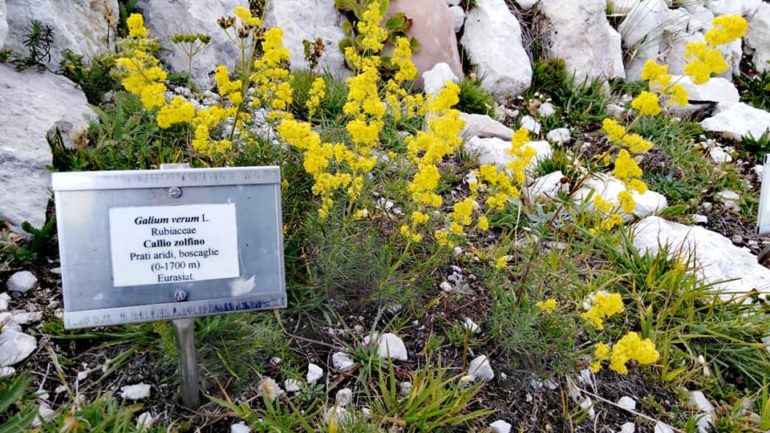
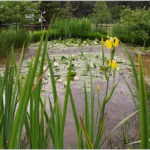

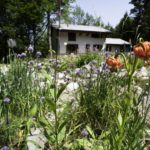

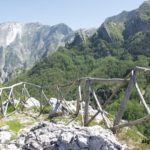
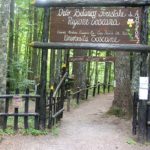


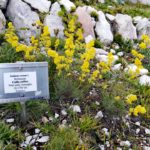


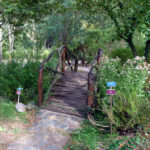
Leave a Reply